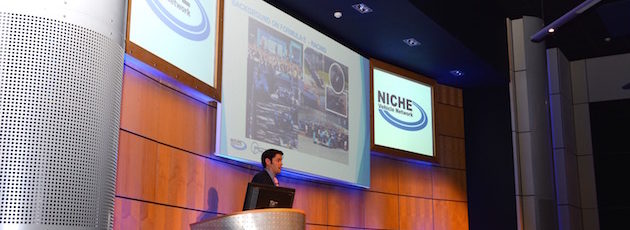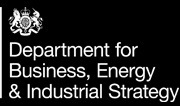
Event Review: Niche Vehicle Network Symposium 2016
The Niche Vehicle Network Symposium 2016 showed that smaller automotive manufacturers and suppliers can deliver innovative research and development projects with impressive results in short timescales and with comparatively small budgets…
The UK automotive industry has been transformed over recent years by government and industry working together and by collaborative funding projects, however typically the size of such projects are beyond the scope of smaller specialist manufacturers and suppliers – which is where the Niche Vehicle Network comes in.
The fact that the UK is excellent at innovation was a main message in the keynote address at the event which was given by Dr Ruth McKernan CBE, Chief Executive of Innovate UK. Innovate UK is currently focusing on supporting small businesses with high growth potential. Are there any innovative low emission automotive ideas out there?
Well, look no further than Formula E; like Formula 1, there’s much R&D behind Formula E taking place in the UK, as explained by Dr Paul Faithfull, Managing Director of Potenza Technology in his presentation entitled ‘Formula E and the Implications for The Niche Sector’. Even though Formula E [link] has only been around for two years, and many people said it would never succeed, it has had huge coverage both on TV and online, and it enjoys a growing, young audience. It has also now secured five years of funding due to backing from the Discovery Channel.
Paul Faithfull, who has been involved in the Niche Vehicle Network for a number of years, provides technical advice for the American Dragon Racing Formula E Team – which had just won the Formula E race in Mexico the previous weekend before the conference.
Formula E is developing into a fascinating test bed for EV technologies. Although all the cars were the same in season 1, as the racing series progresses, more technology on the cars is being opened up for individual teams to develop themselves. Large automotive OEMs are getting involved, but with technical help from small supply chain companies – such as NVN member Potenza – because such companies are specialists in specific technical areas and can move quickly to develop new solutions.
During the remainder of the NVN event there were presentations about various technical projects, ranging from the development of a tubular space frame chassis for the Caterham 7 based on the technology used in bicycles, to Ginetta developing a chassis using composite materials and processes that are appropriate for low volume car makers and which achieved a 45% weight saving over the original.
Morgan was also involved in a project which used magnesium panels to reduce weight, and Westfield trialled a Wankel rotary engine and chassis lightweighting. AVID and Vayon Group worked on a bus which had the ancillaries separated from the engine, with many ancillary items being converted to be driven by electric power rather than draining the bus engine when not needed.
Jane Thomes from Emissions Analytics talked about a project to measure the real world emissions from a range of niche vehicles including examples from Ariel, BAC, Caterham, Ginetta, Morgan and Zenos. It turned out that the portable emissions testing equipment was somewhat of a challenge to fit to small lightweight vehicles such as the BAC Mono. Despite this, most participants gained a good understanding of the real world emissions and fuel consumption of their cars.
Many of the presentations focused on vehicle weight saving, but one project looked at aerodynamics – an area that is critical for lowering emissions, but judging by ever-increasing SUV sales, it’s an area that seems to be overlooked in the automotive industry.
Aerodynamics can help vehicles be more efficient on the straights, or they can provide more downforce to help vehicles corner and brake more effectively. Not surprisingly, these two aims are usually in conflict with each other. Ariel has been involved in a project that has looked at this issue, together with Delta Motorsport and TotalSim, using the tool of CFD (computational fluid dynamics) to predict airflow around the vehicle. The dream outcome was for low drag at all times except when downforce was needed.
Such an aim was made even more difficult due to the laws of physics, which mean that a doubling of speed results in an increase in drag by a factor of four. So the project looked at active aerodynamics on an Ariel Atom using an active wing concept – reducing drag (meaning improving performance and lowering emissions), but also increasing downforce when required.
The project achieved an excellent result of a reduction in drag of 5%, but also an increase in downforce of more than 50%. In fact the findings were so impressive that a patent is being applied for. This really does show that the NVN – which started off working just in the area of niche vehicles and motorsport – could be helping to play a part in making mainstream cars of the future more efficient.
Find out more about the Niche Vehicle Network at www.nichevehiclenetwork.co.uk





